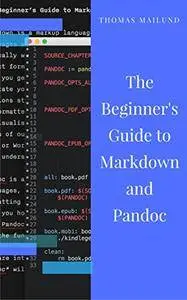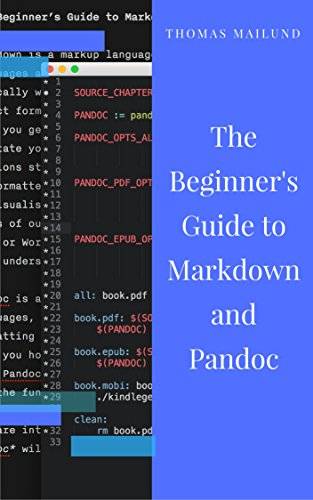The Beginner's Guide to Markdown and Pandoc
2017 | English | ASIN: B06XYPLZC1 | 167 pages | PDF + EPUB (conv) | 0.7 Mb
2017 | English | ASIN: B06XYPLZC1 | 167 pages | PDF + EPUB (conv) | 0.7 Mb
Markdown is a markup language; the name is a pun. Markup languages are used to annotate text formatting information, typically with a stronger focus on semantic information than direct formatting as you would do with WYSIWYG (what you see is what you get) formatting. With markup languages, you might annotate your text with information about where chapters and sections start, but not how chapter and heading captions should be formatted. Doing this decouples the structure of a text from how it is visualised and makes it easier for you to produce different kinds of output. The same text can easily be formatted as HTML, PDF, or Word documents, with various visual styles, by tools that understand the markup annotations.
Pandoc is a tool for translating between different markup languages, such as LaTeX, HTML, and Markdown. I use it for formatting the books I write. This booklet describes how. I will tell you how to write manuscripts in Markdown and translate them with Pandoc into different output formats. I will not describe all the functionality that Pandoc provides, only how it can be used to write papers and books in Markdown. If that is something you are interested in, The Beginner’s Guide to Markdown and Pandoc will get you started.



